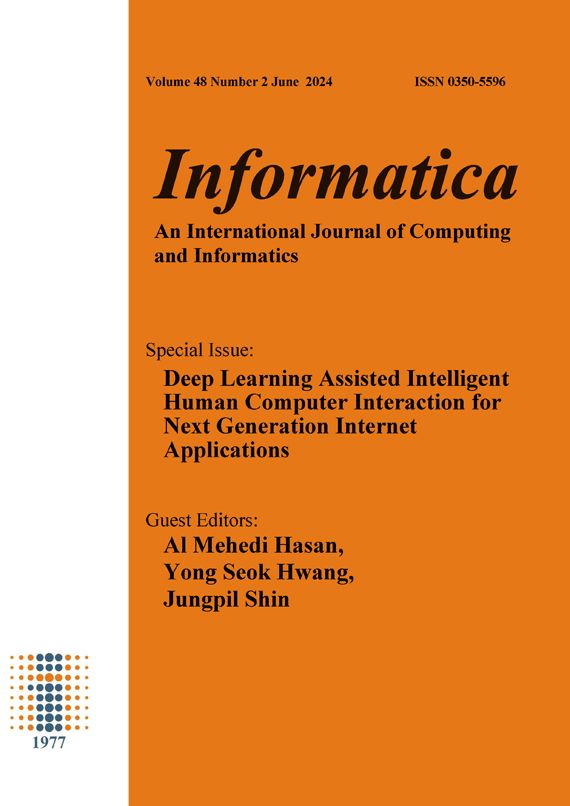Cardiacnet: Cardiac Arrhythmia Detection and Classification Using Unsupervised Learning Based Optimal Feature Selection with Custom CNN Model
DOI:
https://doi.org/10.31449/inf.v48i2.5076Abstract
The irregularity in the heartbeats caused cardiac arrhythmia, which resulted in serious health problems. This cardiac arrhythmia is monitored by electrocardiogram (ECG) signals. As a result, an accurate and timely analysis of ECG data can prevent serious health problems. However, the conventional manual prediction systems and artificial intelligence (AI) methods failed to detect the cardiac arrhythmia because they failed to extract the deep salient features from the ECG dataset. So, this research work implements a model named as CardiacNet, which is used to identify and classify cardiac arrhythmias from a MIT-BIH-based dataset. Initially, the pre-processing operation is performed to remove the non-linearities from the dataset. Then, unsupervised machine learning algorithm-based principal component analysis (UML-PCA) is used to extract the features of the pre-processed dataset. Further, the optimal feature selection operation is carried out using improved Harris Hawk’s optimization (IHHO), which is a naturally inspired model. Moreover, a customised convolutional neural network (CCNN) model performs the classification of various cardiac arrhythmia diseases using IHHO features. The simulation results show that the proposed CardiacNet resulted in accuracy of 97.57%, sensitivity of 98.29%, specificity of 97.97%, F-measure of 97.40%, precision of 98.66%, Matthew’s correlation coefficient (MCC) of 98.17%, dice of 98.96%, and Jaccard of 97.12%. The performance comparisons show that the proposed CardiacNet resulted in improved metrics over all existing methods.Downloads
Published
Issue
Section
License
I assign to Informatica, An International Journal of Computing and Informatics ("Journal") the copyright in the manuscript identified above and any additional material (figures, tables, illustrations, software or other information intended for publication) submitted as part of or as a supplement to the manuscript ("Paper") in all forms and media throughout the world, in all languages, for the full term of copyright, effective when and if the article is accepted for publication. This transfer includes the right to reproduce and/or to distribute the Paper to other journals or digital libraries in electronic and online forms and systems.
I understand that I retain the rights to use the pre-prints, off-prints, accepted manuscript and published journal Paper for personal use, scholarly purposes and internal institutional use.
In certain cases, I can ask for retaining the publishing rights of the Paper. The Journal can permit or deny the request for publishing rights, to which I fully agree.
I declare that the submitted Paper is original, has been written by the stated authors and has not been published elsewhere nor is currently being considered for publication by any other journal and will not be submitted for such review while under review by this Journal. The Paper contains no material that violates proprietary rights of any other person or entity. I have obtained written permission from copyright owners for any excerpts from copyrighted works that are included and have credited the sources in my article. I have informed the co-author(s) of the terms of this publishing agreement.
Copyright © Slovenian Society Informatika








